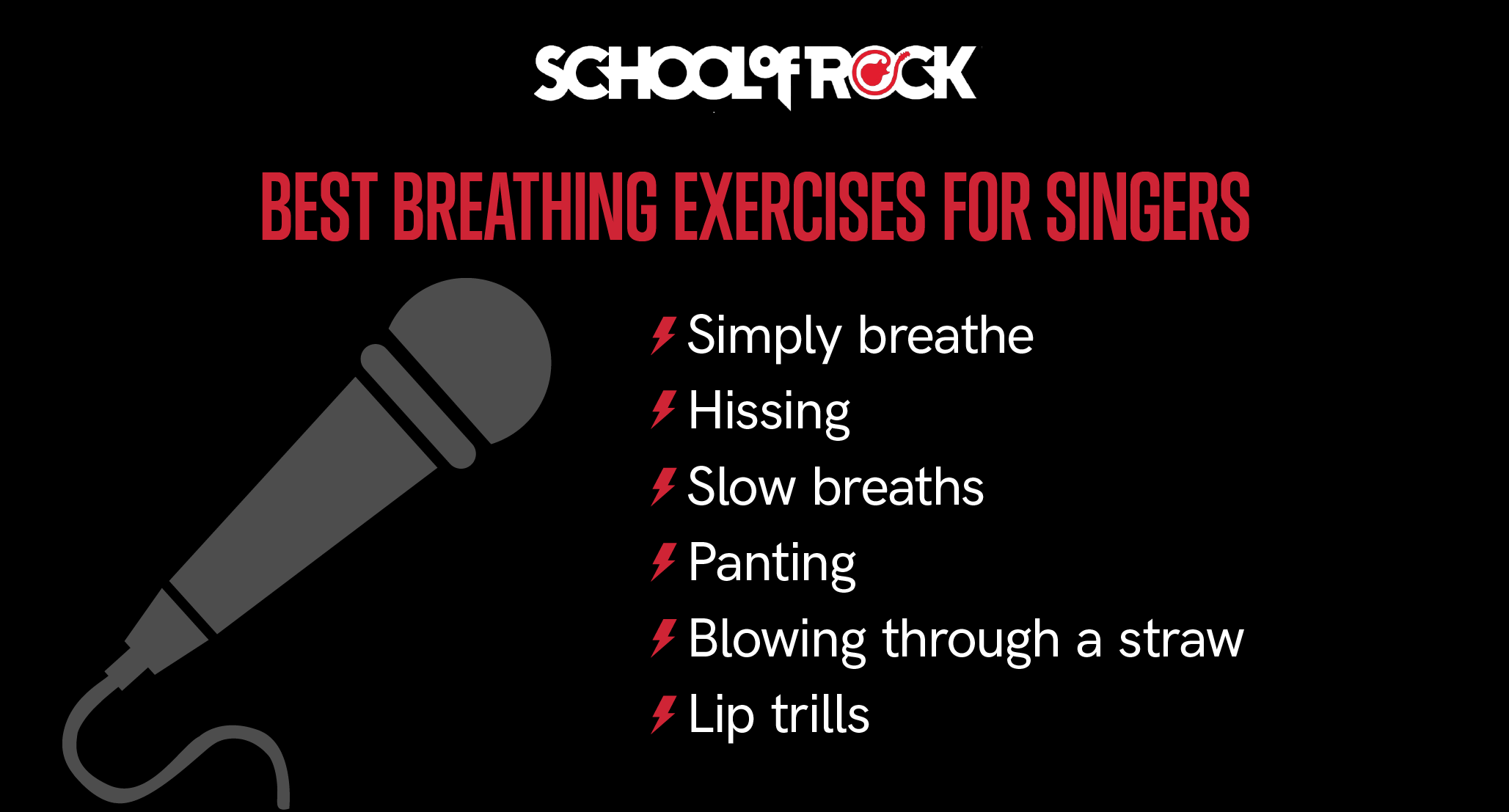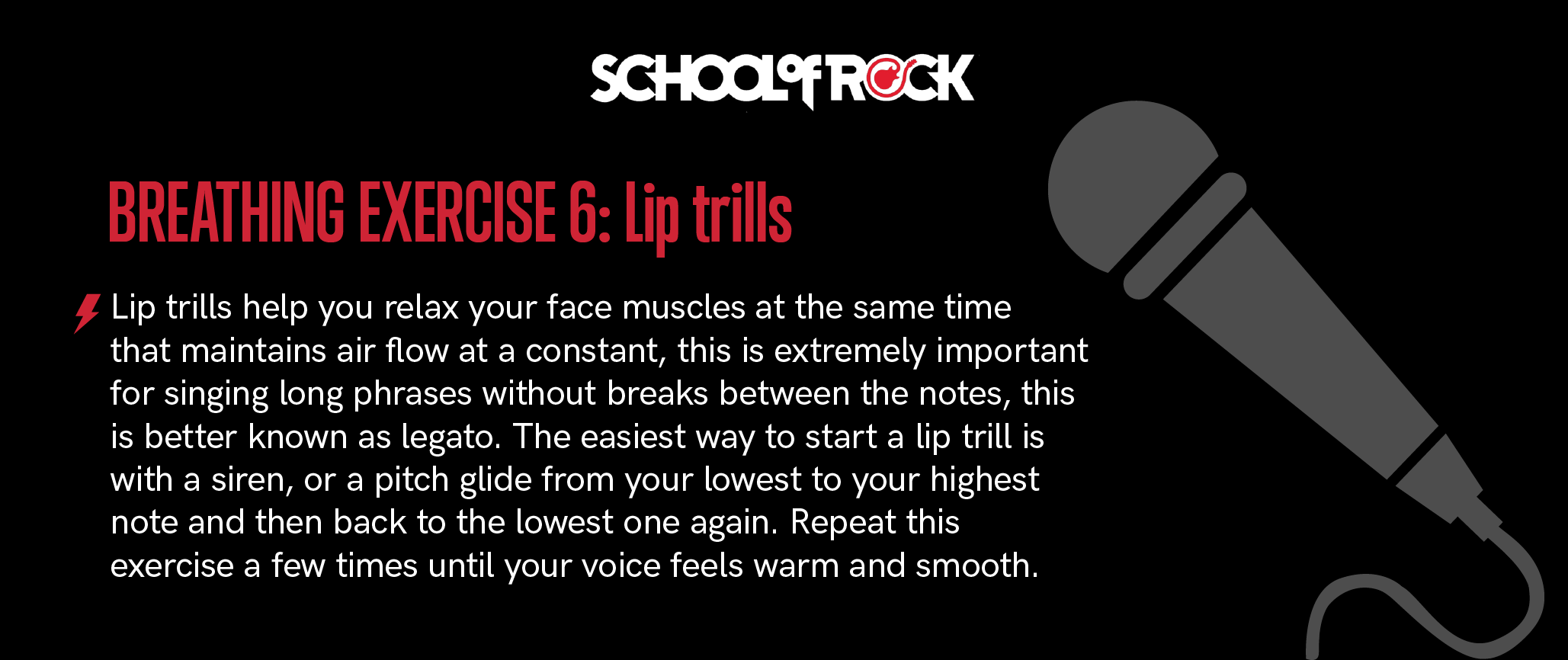Photo credit: Matte Erickson for All Music Magazine
Concepts like breath support and breathing with the diaphragm are typically discussed from the start in singing lessons. But what do these terms actually mean and how does it help you and your singing?
The first time our lungs fill with air is when we are born. A newborn baby’s cry is strong, powerful, and can last for hours. We can thank that amazing power and sound to their diaphragmatic breathing. As we grow however, we learn a more shallow type of breathing using our chest. As singers, it is essential to retrain our muscles and go back to our primal way of breathing. When we breathe, contracting our diaphragm, our lungs fill to their maximum capacity and we can sing powerfully and sustain long notes while having a clear and loud sound. Regardless of whether you are an opera singer, a rock god, or a pop star, all great singers in every genre and style have one thing in common: diaphragmatic breathing.
Diaphragmatic Breathing
Diaphragmatic breath, often called “belly breathing,” might feel uncomfortable or even unnatural at the beginning. However, once we strengthen those muscles, it starts to become comfortable again. A weak diaphragm leads to shallow breathing which results in shortness of breath during singing. For example, the song “Stairway to Heaven” by Led Zeppelin has a rather difficult part starting at measure 154, where the singer needs to maintain a phrase for five measures with no pauses to breathe. It is imperative for the singer to have proper breath support to be able to accomplish such a deed.
One of the most important parts of singing is controlling your breath. Adjusting the amount of flowing air will give you control over your phrasing and dynamics. Breath control allows you to have both a powerful, loud voice as well as a soft, clear sound. The process of breathing has two stages: inhalation and exhalation. During inhalation air flows into the lungs and fills the chest cavity. During exhalation air is pushed out of the lungs. There are two factors to keep in mind during this process. The first one is the difference in pressure between the lungs and the atmosphere (the larger the volume of air the lower the pressure). The second factor is the relaxation and contraction of the muscle fibers of the diaphragm and the intercostal muscles. The lungs are passive, which means they are not involved in creating movement. The muscles around them force them to expand and contract, creating respiration.
For singers, however, a couple additional steps should be included which are preparation and suspension. When singing, it is extremely important to make sure that before we inhale, we soften and expand our soft palate and correctly position and relax our tongue right behind our teeth. We then proceed to inhale making sure our body is relaxed, our belly, sides, and back expanded, and our pelvic floor engaged. During suspension, we take a second to think how much air we need to release and how long it should last depending on the phrasing. Phonation happens during exhalation. If we follow the first three parts of the process correctly, we can expect a beautiful, strong voice to emerge.

6 simple breathing exercises every singer should be using:
Breathing Exercise 1: Simply Breathe
Lay on your back on a carpet or rug, any comfortable, firm surface will do. Place a hand on your belly and another hand over your chest. Inhale through your mouth slowly and try to consciously force your belly to expand while you inhale. Exhale through your nose slowly and force your belly to contract again. Observe as your belly hand moves up with each inhalation and down with every exhalation. Now, while your belly hand should move up and down, your chest hand should have no movement at all. Repeat this exercise at the beginning of each warm up session. Once you become comfortable with deep diaphragmatic breathing you can do the exercise while standing up, still placing your hands on your tummy and your chest and making sure the chest hand is not moving as you inhale and exhale.

Breathing Exercise 3: Practice Slow Breaths
Inhale through your mouth or nose for 4 seconds. Hold your breath for 8 seconds. Then exhale for 8 more seconds. Try to keep all your muscles relaxed during this whole exercise. Repeat 4 times.
Breathing Exercise 4: Panting
Panting helps singers develop stamina. By training your muscles to rapidly expand and contract you will be able to develop strength. To do this exercise, bring your tongue out like a puppy (just let it hang). Place your fist in between your ribs and sing the notes of a scale by vocalizing “ha” on each one. Your fist should move in and out with the diaphragm movement. End each scale with a long sigh to relax.
Breathing Exercise 5: Blowing Through a Straw
Blowing through a straw helps stretch and reset your vocal chords. It is especially helpful for those who speak or sing low in their register. Basically, take a straw, place it in your mouth and do a pitch glide from your lowest to your highest note. Repeat this for a couple of minutes. Then proceed to include some accents by engaging your abdominal muscles. The effort shouldn’t come from your throat, it should come exclusively from your abdomen. Finally, hum your favorite song through the straw. Once you are done with these exercises, you should feel a change in the placement of your voice from your chest to your eyes. Repeat throughout the day if your voice feels tired.

Breathing Exercise 6: Lip Trills
Lip trills help you relax your face muscles at the same time that maintains air flow at a constant, this is extremely important for singing long phrases without breaks between the notes, this is better known as legato. The easiest way to start a lip trill is with a siren, or a pitch glide from your lowest to your highest note and then back to the lowest one again. Repeat this exercise a few times until your voice feels warm and smooth.
Take your breathing - and singing! - to the next level!
Next time you see a baby cry, notice how their belly fills and how strong and healthy their voice is. Here are 7 tips to keeping a healthy singing voice. Sometimes, getting back to diaphragmatic breathing takes some effort. Get help from an expert singing teacher at School of Rock. At School of Rock we make healthy singing a priority. Your voice is your instrument, and we teach you how to take care of it and how to reach your full potential. Enroll in School of Rock singing lessons today.
About the author
Alejandra Febre is the General Manager and a Vocal Instructor at School of Rock Cypress, TX. Alejandra is currently studying an Associate Degree in Music at Lone Star College.




